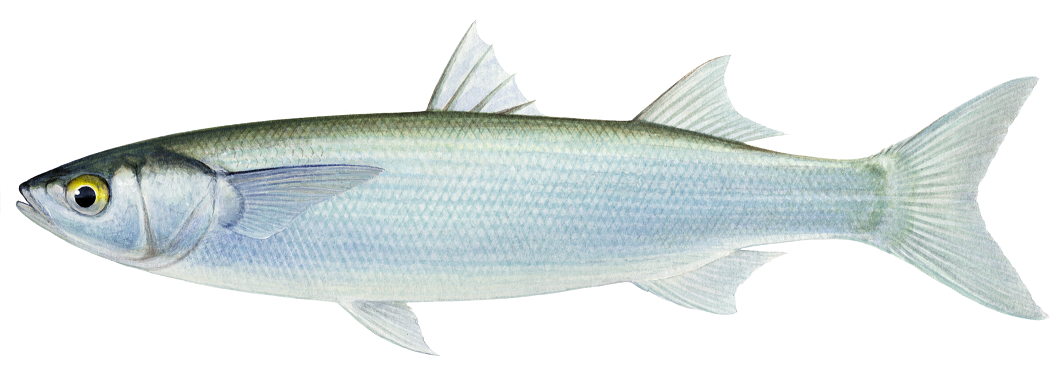Yelloweye Mullet
pinungana (Fish)
In palawa kani, the language of Tasmanian Aborigines, with thanks to the Tasmanian Aboriginal Centre.
Aldrichetta forsteri (Yelloweye Mullet)

2022/23 Yelloweye Mullet Status (Released August 24)
| Stock Status | SUSTAINABLE | ||
| Summary | Yelloweye Mullet are most abundant in estuarine habitats, where netting is prohibited or restricted, providing this species a high degree of protection throughout most of its range in Tasmania. Commercial logbook records indicate consistently low levels of catch. Therefore, it is unlikely that the stock is recruitment impaired or that the current fishing pressure could cause the stock to become recruitment impaired in the future. | ||
| Importance | Minor | ||
| Stock | Tasmanian Scalefish Fishery | ||
| Indicator(s) | Catch, effort and CPUE trends | ||
| Managing Jurisdiction | State (Tasmania) | ||
Background
Yelloweye Mullet is a schooling species that inhabits shallow (≤20 m), sheltered waters over sand and seagrass, with highest abundances recorded in estuaries (Edgar 2008). Yelloweye Mullet are occasionally targeted commercially using beach and purse seine nets as well as small mesh nets. The vast majority of commercial Mullet catch in Tasmanian waters is Yelloweye Mullet; however, some catch may include Sea Mullet (Mugil cephalus). Recreationally, Yelloweye Mullet are targeted using rod and line or small mesh gillnets (‘mullet nets’).
The latest full Scalefish Assessment can be found at the link:
Learn more about what each stock status classification means on our Stock Status Classifications Information Page:




Social and Economic Indicators